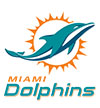Benefits of DOOH Advertising Compared to Traditional Media

Digital DOOH is a medium but can be targeted precisely to reach your target consumers at a given time and place. Using programmatic, this allows advertisers to maximize ROI through ad placements.
Getting the most out of your campaign requires careful planning. The best way to start is by understanding your audience.
Explanation of OOH Advertising
OOH advertising is a form of marketing that aims to grab the attention of people walking or driving past a physical advertising space. The goal is to encourage consumers to take action, such as visiting a business’s website or buying products. Using real-time data analytics, marketers can tailor ads to specific audience demographics and improve campaign performance.
Some examples of OOH advertising include billboards, transit ads, street signage, POS displays, kiosks, and mobile phone booths. While traditional OOH mediums are still effective at reaching large audiences, digital formats are becoming more popular for their ability to capture attention and increase engagement.
One of the most popular types of digital OOH ads is TikTok-style video content. The format is perfect for places with high dwell times, such as airports, shopping malls, and restaurants. This type of ad can be used to promote special deals or discounts and create a sense of urgency among consumers.
Traditional and digital OOH advertisements can be effective at influencing consumer behavior, but businesses should be aware of potential ethical concerns. For example, ad campaigns that feature product placements in locations that can cause safety issues must be carefully planned to avoid any legal problems. Additionally, OOH advertising should not promote any products or behaviors that are harmful to public health or welfare. Moreover, it should not discriminate against competitors or invade privacy in any way.
Benefits of DOOH Advertising Compared to others
DOOH advertising offers a range of benefits compared to traditional media. It provides better engagement, measurable results, and granular targeting. However, its effectiveness depends on the right format in the correct location. In addition, marketers should understand the audience and how they spend their time to maximize reach and impact.
Traditional OOH ads are printed on physical materials and have fixed messages and designs, but digital OOH displays can be updated in real time with dynamic content and eye-catching elements. This flexibility helps advertisers to adapt their campaigns to their audiences’ needs and wants. They can also track their campaign performance based on impressions, which is a more accurate measurement of reach compared to foot traffic studies.
In addition to real-time content adjustments, programmatic DOOH allows brands to target specific audiences based on different factors like weather, traffic patterns, and demographics. This allows them to get more value from their marketing dollars by reducing waste and improving ROI.
The ability to use ad automation allows marketers to avoid ad fatigue by showing their message at the right moment. They can also avoid the problems of ad blocking, which is a common complaint among consumers. According to the PageFair Adblock 2021 Report from ad tech company Blockthrough, the number of people using ad blockers on mobile devices has doubled between 2015 and 2020.
OOH Advertising vs Digital Out of Home
Digital out-of-home advertising (DOOH) offers many advantages over traditional media. It can be used to reach consumers in a more targeted way, and it provides a variety of measurement capabilities that enable marketers to optimize their campaigns for increased ROI.
These platforms can offer a wide range of media options, from dynamic video to interactive elements that can capture consumers’ attention. They also offer the ability to change messaging in real-time, responding to current events or consumer feedback. This flexibility and scalability make DOOH advertising a powerful addition to any marketing strategy.
One of the biggest advantages of DOOH advertising is its ability to deliver contextually relevant content. This has been shown to improve brand recall, ad awareness, and ultimately sales and foot traffic. DOOH is also a great complement to other marketing channels, such as social and mobile.
In addition to offering a variety of media options, DOOH ads can be targeted using several data sources, including WiFi analytics, facial recognition technology, and weather data. These technologies can be used to identify the most effective display locations for your campaign, ensuring that it reaches your target audience at the right place and time. They can also be used to measure engagement and conversion rates. This information can help you determine whether your campaign is working and identify any areas for improvement.
Cost of DOOH Advertising
Unlike traditional marketing methods that are often slow and expensive, getting started with digital out-of-home advertising is fast and affordable. Its production costs are lower, and programmatic technology allows for automated purchasing of ad space — saving money and time. Its granular targeting capabilities also optimize spending by eliminating wasted ad placements and optimizing ROI.
With the right messaging and creativity, DOOH can be an effective marketing tool that increases brand awareness and generates sales. In addition to its mass reach and recent dynamic capabilities, DOOH ads can deliver real-time data and interactive elements that engage consumers and encourage them to take action.
Examples of DOOH ads include digital displays in sports stadiums and airports. These digital billboards display advertising messages and provide information to travelers, such as flight times, fares, and gate numbers. They can also be used to promote products and services to sports fans.
Another use case for DOOH is outdoor retail, such as malls and shopping centers. Here, marketers can create engaging, eye-catching displays that catch the attention of passersby and increase engagement rates. For example, cosmetics brand Loreal used a digital ad in a beauty store to encourage customers to try out new makeup with the help of augmented reality.
The digital out-of-home advertising industry is growing quickly, thanks to its ability to engage audiences and drive conversions. Its mass reach and dynamic capabilities make it a powerful marketing tool, and its integration with other channels is key to reaching the maximum impact of any campaign.

















